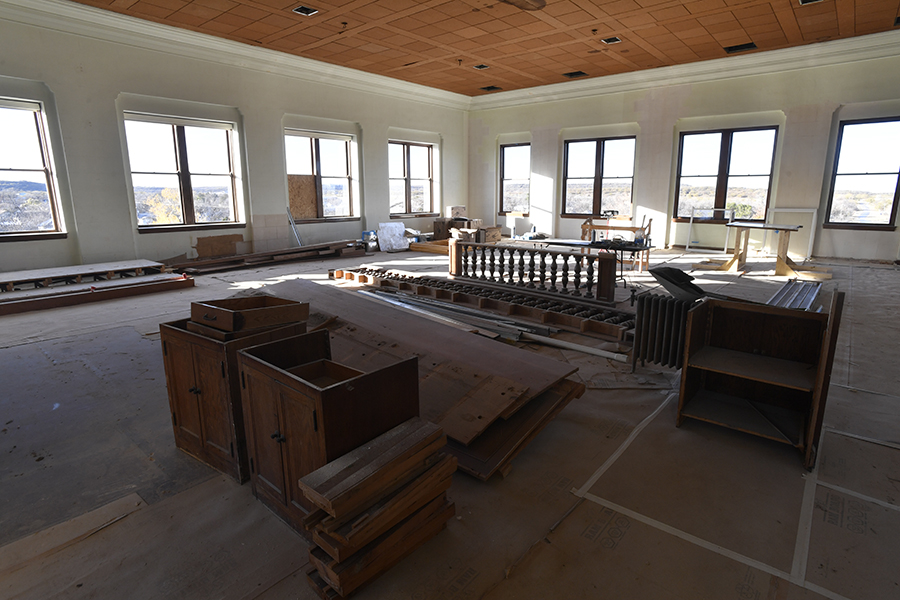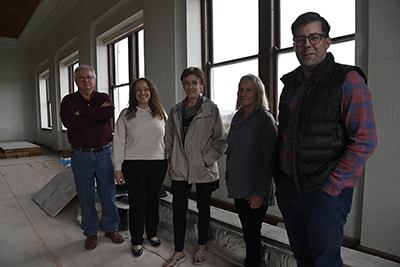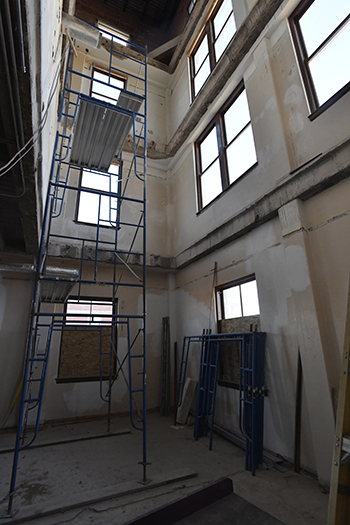County Magazine | January 29, 2024
Callahan County's Journey to Building a "Smart Courthouse"

Callahan County is finishing construction on what officials are calling the courthouse of the future. While at initial glance the structure will look like it did in 1929, the guts running the building reflect 21st-century innovation.
Scheduled to reopen this summer, the courthouse features an advanced heating and air conditioning system that uses the earth to heat and cool water running through the pipes. It has intelligent lighting and irrigation systems that will adjust operations based on external conditions. A digital building management system will alert county officials and workers on their smartphones of troubles such as an outage or plumbing leak.


"It has been really neat to be a part of a project that has been very forward thinking," said Sandra Rose, Callahan County Auditor. "We're able to see how that directly affects the taxpayer, not only in terms of saving them money on energy costs in the future, but also providing them a better product in the process."
Rose is a member of the county's facilities committee that formed in part to reduce energy costs and make operations simpler and more efficient for employees and visitors to the courthouse.
The road to developing a "smart courthouse" started in 2005, when the county created a master plan. It wasn't until 2014 when county officials finally received an emergency grant from the courthouse preservation program to restore windows that discussions about full restoration started to resurface.
"When it was pointed out that the courthouse had not had any running hot water in 20-plus years, that is what pushed it across the finish line."
— Sam Goldsmith, member of the Callahan County facilities committee
In 2020, the county received a $4.7 million full restoration grant from the state, and amid the COVID-19 outbreak, county voters that November approved a $6.9 million bond proposition to cover the rest of the cost of the construction.
"When it was pointed out that the courthouse had not had any running hot water in 20-plus years, that is what pushed it across the finish line," said Sam Goldsmith, a member of the facilities committee, about persuading the commissioners court to approve restoration efforts amid the pandemic.

Voters also approved another $8 million bond proposition to restore three other county buildings, including the annex next to the courthouse.
"I am excited and thankful to see this amazing restoration project that was envisioned by former County Judge Roger Corn and launched by former County Judge Scott Kniffen be completed," said current County Judge Nicki Harle. "The facilities committee has done a phenomenal job of overseeing the restoration, ensuring that historical integrity and modern technology are blended to make the courthouse a masterpiece for generations to come."
Goldsmith, a Callahan County native, has pushed to upgrade the county's technology capabilities since 2005, when his business became a vendor for the county. Since then, he has served on a Texas Historical Commission advisory panel, where he advocated to "preserve the aesthetics of the (courthouse) building and prepare the building for what's needed in the future," Goldsmith said.
Callahan County has bought in to the philosophy, with plans to add technology to its newly restored courthouse that few counties, particularly in rural areas, have seen. Features include:
LED lights that will adjust automatically based on the sunlight flowing into a room.
Electrochromic windows in the annex building that will automatically tint based on how bright it is outside.
Sprinklers on the courthouse lawn that will adjust water levels based on rain data from the National Weather Service.
Elevators that will slow down during non-peak hours.
A building management system will automatically transition these features into energy-efficient modes and even turn the lights in the building to a level that resembles how it looked back in the early 1900s.
It can also detect maintenance issues before they become disastrous and costly — alerts that can be sent directly to officials' phones.
"Counties are not a top-down structure, meaning there's not one central person in charge of the entire organization. And so, the more data you can have, the more alerts you can have to the leadership of the county, the better off you are," Goldsmith said.

Maintenance issues are huge money sinks for counties annually. According to TAC Risk Management Pool (TAC RMP) data, water damage claims of more than $50,000 have doubled since 2015. TAC RMP's average claim cost for water damage losses between 2019 and 2023 due to freezing weather conditions is $140,400.
"For instance, you have that water leak that goes undetected for days, creating a situation where you lose irreplaceable items, documents, relics, whatever's stored there," said Clem Zabalza, TAC Risk Control Manager, adding that leak detectors are among the most helpful and relatively inexpensive pieces of technology counties can purchase to reduce property damage.
"A great use of technology is automating a lot of the processes that are being done manually, and because of 'smart' technology, it's able to stay a step ahead," Zabalza said.
Some of Callahan County's most interesting technology comes with hefty upfront costs that county officials hope will be recouped with energy and maintenance savings. Although the geothermal HVAC system is priced at $1.3 million, about $300,000 more than a traditional HVAC system, Goldsmith said that the county will be able to recover that difference from energy savings during the next eight to 10 years.
Working with a third-party accounting firm, Rose is also diligently pursuing tax credits the federal government has granted for energy-efficient projects, which could cover up to 50% of the HVAC system. Another set of tax credits that the county can apply for could be passed on to vendors, who then could give the county a price reduction on their services.
"The debt cost to taxpayers is just cost-prohibitive, so knowing that these tax credits are out there, if that can reduce the county's initial capital investment by 30% to 50%, it might make that more palatable," Rose said. "And then, they're also going to realize the energy-efficiency savings on the backside."
Rose said she is passing on her tax credit findings to the Texas Historical Commission, with hopes that it can spread the knowledge to other counties.
The county is also welcoming any of its peers to tour the construction so they can develop ideas on potential energy-efficient and smart technologies.
Although the savings and efficiencies are a plus, the new features of the courthouse will transform the way county employees and the public use the building, Rose said. Many of the facilities committee's design decisions were based on user comfort, including private offices, ability to control settings in a room without affecting the rest of the courthouse, and a remedy to a ubiquitous office inconvenience — plenty of electrical outlets.
"We've really tried to consider all of those things both to make the employees comfortable and to make their job of serving the taxpayers easier, more efficient and better," Rose said. "This building is also going to accommodate all of the technology that is very common today but wasn't around when courthouses were built and have the rooms be purposefully designed without taking away the historic aesthetic."


